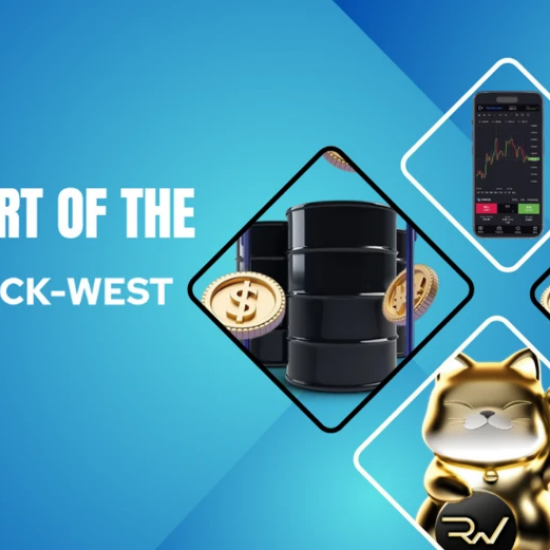When we looked at subprime auto delinquencies most recently, we found some troubling trends: first, in February, we showed that 61+ day delinquencies in General Motors’ subprime securitization book would support a rather bleak thesis for future auto sales, and specifically the demand side of the equation, with January 2017 delinquency rates soaring to the highest levels since late 2009/early 2010.
Ironically, this hasn’t stopped lenders from providing financing, and according to Morgan Stanley since 2010, the share of Subprime Auto ABS origination that has come from deep subprime deals has increased from 5.1% to 32.5%, suggesting that yield-starved buyside will put “other people’s money” into anything as long as it provides a slightly higher yield.
Meanwhile, the subprime shock has already impacted the broader market, observed with the latest monthly auto sales data which declined four month in a row heading into May. An even bleaker picture of the subprime market emerged a month later when looking at the latest securitization analysis from Morgan Stanley which revealed that 60+ day delinquencies at 266 subprime auto ABS deals were surging – despite low unemployment, high consumer confidence and debt-to-income ratios at 30-year lows – back to ‘great recession’ levels. Meanwhile, loss severities were also shooting higher just as used car prices were sliding.
In part, this tied in with the overnight look at the “flood of off-lease vehicles“, according to which by the end of 2019, an estimated 12 million low-mileage vehicles are coming off leases inked during a 2014-2016 spurt in new auto sales, which is set to put even more pressure on used (and new) car prices for the foreseeable future.
As Reuters noted, a computer search for available used vehicles within 150 miles of Reel revealed an eye-popping figure: 668 Escapes. That’s enough to put more than 40 percent of the inhabitants of this small northeastern Ohio town, population 1,600, into the popular crossover. A search for the Chevrolet Equinox, a comparable crossover, showed 461 available.
“The automakers have flooded the market,” said Reel, owner of Reel’s Auto in Orwell, Ohio, about 40 miles east of Cleveland.
The above trends validate a recent bearish Morgan Stanley analysis, which forecast that the plunge in used car prices is just getting started, and in a bear case, the bank sees used car prices dropping by up to 50% over the next 5 years.
* * *
However, in an even more troubling development for US consumers, it now appears that the other shoe for the US auto market has finally also dropped, and according to analyses by both Morgan Stanley and S&P, losses on prime auto loans are also surging.
In the latest note by Morgan Stanley’s Jeen Ng, the analyst reports that “fundamental performance deterioration has not been confined to Subprime. Both 60+ day delinquencies and default rates in Prime ABS pools have nearly doubled from their post-crisis lows.”
A slightly better picture – at least according to MS data – emerges in terms of loss severities. Still, while subprime losses are far worse, the deterioration among prime loans is unmistakable: compared to peak levels, 60+ day delinquencies in Prime auto loan pools are roughly 65% of the way back, whereas Subprime pools are close to 95% of their peak levels. On the default rate side, the deterioration is somewhat more subdued, with Subprime over 80% of the way back to prior peaks while Prime has yet to reach the 45% mark.
One troubling observation, as confirmed in the recent Fed Senior Loan Officers Survey is that credit standards have continued to ease: as in Subprime, some of the ongoing Prime deterioration can be attributed to a relaxing of credit standards.
Aggregate credit scores have decreased by about 5 points, which while easier is not even half as much as the 10+ point deterioration in Subprime. The same is true for longer origination terms. Most Prime issuers have extended loan terms by 3-4 months over the past 5 years. In Subprime, extension in most cases has been longer than 10 months. These easier standards can help explain both why delinquencies and defaults are higher, according to Ng. Also, keep in mind, there is a limit as to how far Prime issuers can expand their credit box in the form of lower credit scores before the deals become Subprime.
Some more observations from Morgan Stanley, which finds a particular deterioration in recent loan issuance at Huyndai and Mercedes:
As auto lenders expand their credit box to weaker credit borrowers, we should expect to see poorer credit performance among more recent deals relative to the more seasoned ones.
Across the OEM originators above, we see a very consistent shift in lending standards over time – marginally longer loan terms, higher credit scores and lower used car composition. Overall, the longer loan terms and higher credit scores have offsetting effects on fundamental performance. If we look at the 60+ delinquencies and 3-month CDR curves by vintage, we don’t necessarily observe performance deterioration over time, and for some issuers we even see relative outperformance among recent deals. However, we do see higher severities among recent vintages, which we can at least partly attribute to the decline in used car values.
HART (Hyundai) and MBART (Mercedes Benz) serve as exceptions to the above, with a higher % of used vehicles and FICO migration of less than +10 points over the last 7 years. They are also the two shelves which show the most pronounced performance shift. TAOT (Toyota) also extended their credit score by less than 10 points, but their change in origination loan terms has been minimal and they have a lower composition of used vehicles over time.
Additionally, in terms of loss severities, the bank finds that all originator types appear to be trending higher in similar fashion, with non-bank originators printing the lowest recovery values. OEM originators overtook bank originators to see the highest recovery values last year.
* * *
In a separate, and even more downbeat report, S&P Global Ratings analyst Ann Matin noted that losses in bonds tied to “prime auto loans have surged surged in recent months from a year ago, hurt by falling recoveries” and notes that prime net losses rose to 0.73% in February from 0.57% in same month last year. According to S&P, bonds from some issuers that have become a larger share of the index, including Mechanics Bank’s California Republic and TCF Financial Corp., and both are contributing to those higher losses. Additionally, the rating agency referred to the abovementioned loan losses at Huyndai, stating that “we’ve increased our expected cumulative net loss levels for certain issuers, including Hyundai’s most recent transaction, HART 2017-A.”
Margin also wrote that prime asset-backed deals issued in 2015 seem to be performing worse, comparatively, than those sold between 2010 and 2014, and the deterioration in loans made to strong credit borrowers has forced S&P to revise its net loss expectations for various bonds.
* * *
To summarize: subprime loan losses have been surging alongside loss severities (with the buyside happy to soak up any and all issuance, regardless of underlying fundamentals), as recoveries slide, and in recent months this deterioration has finally shifted over to prime loans. Meanwhile, used car prices are tumbling, while new car sales have declined for 4 consecutive months as auto loan demand among tapped out consumers has tumbled. Meanwhile, millions of used cars are about to hit the market as they come off lease, which in turn will further pressure used car prices and new car sales.
So what happens next? Here, we’ll repeat what we concluded last night:
Unstable used car prices will almost certainly reduce OEM reliance on leases as the implied 3-year depreciation (or residual values, if you prefer) will make them all but completely uneconomical: remember, Americans only care about that monthly payment. Meanwhile, the relative value between used and new cars will tilt heavily in favor of the used market. Thankfully Americans will still be able to buy that Mercedes they require to get back and forth from their minimum wage jobs, while maintaining a monthly payment of $500 or less, but it will just have to have 30,000 miles on it.
Of course, the OEMs of the world won’t admit that their game is over until it’s way too late. So, they’ll keep right on producing new cars to cover a 17-18mm SAAR environment up until the point they face an outright revolt from their dealer networks. At that point, however, dealer inventories will be so high that Detroit will be forced to shutdown for months on end while new car prices are slashed to reduce the massive inventory glut. Tanking new car prices will put even more pressure on used car prices which will mark the beginning of the death spiral that will result in a new round of inevitable auto bankruptcies, catalyzing the next economic contraction… assuming one hadn’t started already.












